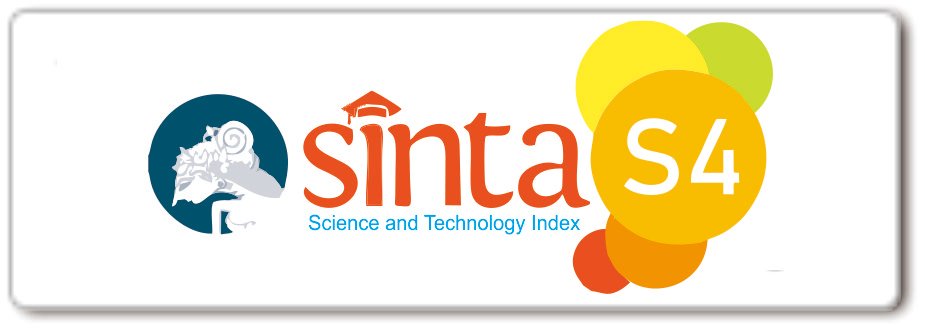INTERLEUKIN-6 SEBAGAI FAKTOR RISIKO TERJADINYA REAKSI LEPRA DINI
DOI:
https://doi.org/10.33820/mdvi.v48i1.106Abstract
Latar Belakang: Mayoritas reaksi lepra terjadi selama menggunakan Multi Drug Treatment (MDT) dan disebut sebagai reaksi lepra dini. Patomekanisme reaksi lepra melibatkan sitokin pro-inflamasi interleukin (IL)-6. Tujuan: Mengetahui apakah ekspresi IL-6 awal yang tinggi pada jaringan kulit merupakan faktor risiko terjadinya reaksi lepra dini. Metode: Penelitian kasus kontrol ini dilakukan pada pasien lepra di RSUP Dr. Sardjito menggunakan blok parafin dari sampel biopsi kulit setiap subjek saat penegakan diagnosis. Kelompok kasus merupakan pasien yang mengalami reaksi lepra dini, sedangkan kelompok kontrol merupakan pasien tanpa reaksi lepra. Ekspresi IL-6 dilihat dengan pengecatan imunohistokimia menggunakan antibodi monoklonal IL-6 dan dinilai dengan program ImageJ. Analisis statistik dilakukan untuk mengetahui hubungannya dengan kejadian reaksi lepra dini. Hasil: Ekspresi positif IL-6 ditemukan pada neutrofil, limfosit, histiosit epiteloid, sel Langhans, dan sel plasma dalam bentuk granuloma maupun tersebar pada dermis. Nilai ekspresi IL-6 awal ≥ 40,21% meningkatkan risiko kejadian reaksi lepra dini hingga 22,2 kali. Kesimpulan dan Saran: Ekspresi IL-6 awal ≥ 40,21% pada jaringan kulit saat penegakan diagnosis lepra merupakan faktor risiko terjadinya reaksi lepra dini. Pada pasien yang terdiagnosis lepra dibutuhkan pemeriksaan ekspresi IL-6 awal pada jaringan kulit untuk menilai faktor risiko kejadian reaksi lepra dini.
Kata kunci :Â Biopsi kulit, interleukin-6, reaksi lepra dini
Downloads
References
2. Mayboroda OA, Van Hooij A, Derks R, Eeden SJF, Van Den Dijkman K, Khadge S, dkk. Exploratory urinary metabolomics of type 1 leprosy reactions. IJID.2016; 45:46–52.
3. Suchonwanit P, Triamchaisri S, Wittayakornrerk S, Rattanakaemakorn P. Leprosy reaction in Thai population: A 20-year retrospective study. Dermatology Research and Practice. 2015;2015:1-6
4. Pratamasari M, Listiawan M. Studi retrospektif: Reaksi kusta tipe 1. Berkala Ilmu Kesehatan Kulit dan Kelamin. 2015; 27:137–43.
5. Wankhade VH, Debnath P, Singh RP, Sawatkar G, Chat DM. A retrospective study of the severe and uncommon variants of erythema nodosum leprosum at a tertiary health center in central India. IJMYCO. 2019;8:29-34
6. Geluk, A. Correlates of immune exacerbations in leprosy. Seminars in Immunology. 2018;39:111-118
7. Dinas Kesehatan DIY. Profil kesehatan provinsi DI Yogyakarta tahun 2017. Kementerian Kesehatan RI, Jakarta. 2017
8. Sales-Marques C, Cardoso CC, Alvarado-Amez LE, Illaramendi X, Sales AM, Hacker MA et al. Genetic polymorphisms of the IL6 and NOD2 genes are risk factors for inflammatory reactions in leprosy. PLoS Negl Trop Dis. 2017;11:1-16
9. Tanaka T, Narazaki M, Kishimoto T. IL-6 in inflammation, immunity, and disease. Cold Spring Harb Perspect Biol. 2014;6: 1-16.
10. Vieira AP, Trindade MÂB, Pagliari C, Avancini J, Sakai-Valente NY, da Silva Duarte AJ, Benard G. Development of type 2, but not type 1, leprosy reactions is associated with a severe reduction of circulating and in situ regulatory T-cells. American J Trop Med Hyg. 2016; 94(4): 721-7.
11. Price VG. Factors preventing early case detection for women affected by leprosy: A review of the literature. Global Health Action. 2017;10:1-6
12. Liu YY, Yu MW, Ning Y, Wang H. A study on gender differences in newly detected leprosy cases in Sichuan, China, 2000-2015. International Journal of Dermatology. 2018;57:1492-1499
13. Tiwari A, Suryawanshi P, Raikwar A, Arif M, Richardus JH. Household expenditure on leprosy outpatient services in the Indian health system: A comparative study. PLoS Negl Trop Dis. 2018;12(1): 1-13.
14. Cortela DCB, De Souza Junior AL, Virmond MCL, Ignotti E. Inflammatory mediators of leprosy reactional episodes and dental infections: A systematic review. Mediators Inflamm. 2015; 2015:1-15.
15. Ma F, Li S, Gao X, Zhou J, Zhu X, Wang D, et al. Interleukin-6-mediated CCR9+ interleukin-17-producing regulatory T cells polarization increases the severity of necrotizing enterocolitis. EBioMedicine. 2019;44:71-85
16. Wang T, Sun X, Zhao J, Zhang J, Zhu H, Li C, et al. Regulatory T cells in rheumatoid arthritis showed increased plasticity toward TH17 but retained suppressive function in peripheral blood. Ann Rheum Dis. 2015;74:1293-1301
17. Hungria EM, Sekula SB, De Oliveira RM, Aderaldo LC, Pontes AA, Cruz R, dkk. Leprosy reactions: The predictive value of Mycobacterium leprae-specific serology evaluated in a Brazilian cohort of leprosy patients (U-MDT/CT-BR). PLoS Negl Trop Dis. 2017;11:1-17.














